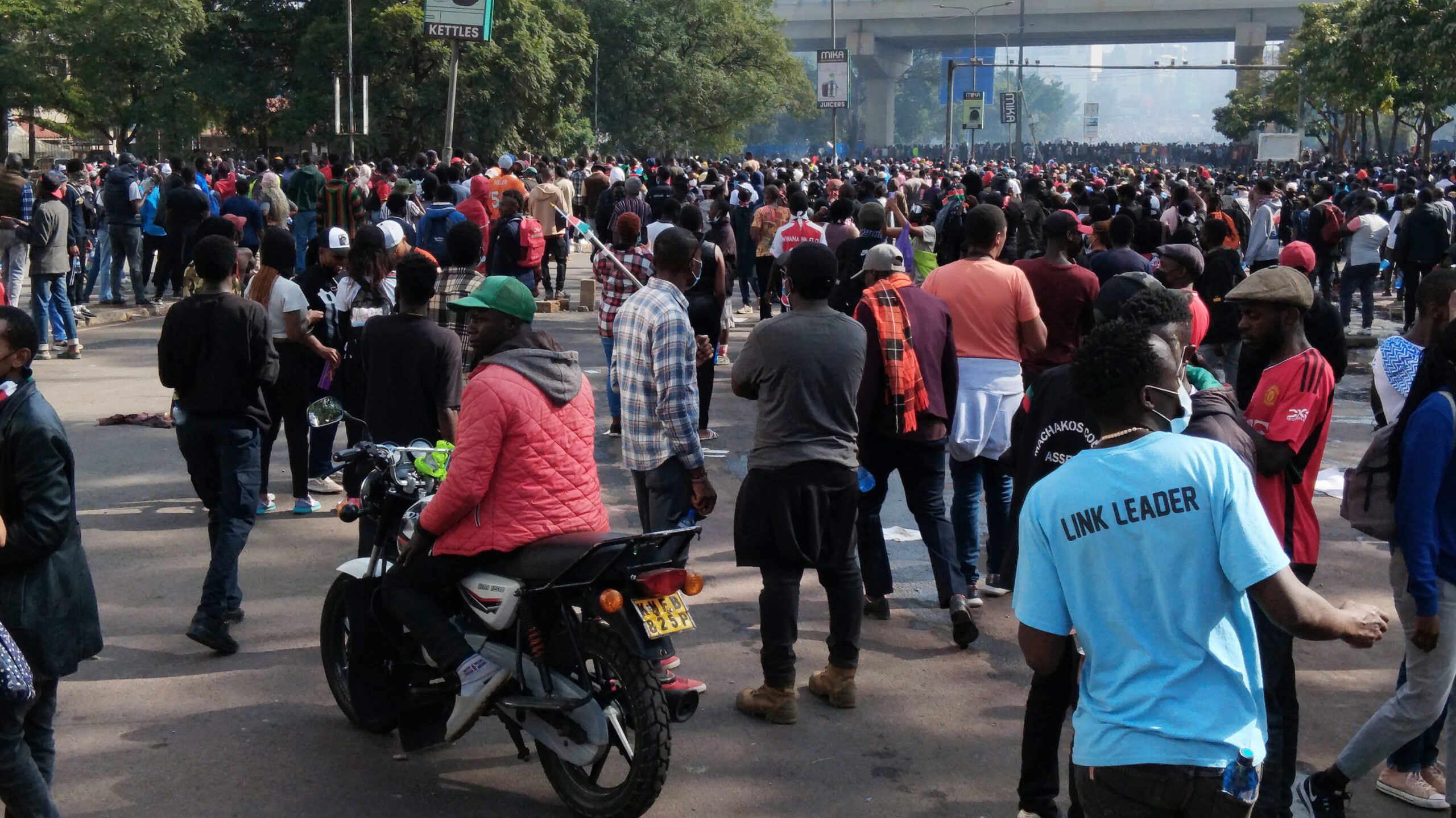GIVING CARE AND LOVE TO DOWN'S SYNDROME BABIES
Down’s Syndrome is a relatively unknown condition by most people including professionals such as teachers and caregivers. Consequently it arouses a lot of stigma and misinformation, as parents of children diagnosed with the condition find out. MWAURA MUIGANA spoke to two parents on the challenges they face taking care of their special children and the joy the children bring to them.
Mary Wangui Njau, mother to 31-year-old David Therenja
Mary Wangui Njau had a prolonged labour that ended with a Caesarean section at the Pumwani Maternity Hospital in Nairobi in 1980. She wasn’t allowed to see her baby for a week until she insisted. She was told that her son, David Therenja, was suffering from jaundice. On the tenth day, she was presented with the baby and discharged from hospital without a word that something was amiss with her baby. She learnt that all was not well with her baby when she took him for the first antenatal clinic.
The doctor at the antenatal clinic said the baby needed a blood transfusion and referred him to Kenyatta National Hospital (KNH). Mary’s husband dismissed the diagnosis and they stayed put at home with their son, but he started getting very sickly.
“One minute he was fine and the next he was having severe epileptic fits. It was during one of those fits that I noticed that my son had strange features. His facial profile appeared slightly flattened, his mouth slightly open and the tongue somehow protruding. His eyes were elongated with tiny folds covering the inner corners of the eyes, a seemingly flat nose bridge, short and stubby fingers, a slightly rounded head and a short neck,” Mary explains.
Mary says the fits ceased when she took her son to KNH where a blood transfusion was carried out. By the time David was two, he had not developed speech or any sign of walking. “He was also sleeping all the time,” says Mary. By this time, Mary had already known that their son had Down syndrome. She vowed to treat him just like a normal child and not hide him from the public as many parents with special needs children often do.
Though he stopped getting sick often, David’s growth was painstakingly slow. Mary gave birth to another baby whose milestones were much faster than David’s. He even started teaching David how to walk and talk. In spite of discouraging remarks from members of the public whenever they saw David, Mary tried to make his life bearable without caring about what people said. For example, she put up a makeshift-walking frame outside their house where David went through walking exercises daily.
David finally started walking at five years but his speech remained very basic. The doctor said his brain development was slow but did not tell her what needed to be done or refer her to a specialist. But Mary was not one to give up on her son. She tried to help his son improve his speech by talking to him and ensuring his brother kept him engaged. He also exposed him to other children as much as possible. When her younger son joined nursery school, Mary decided to also enroll David who was seven at the time. It is recommended that children with Down syndrome attend integrated schools rather than special ones.
While his physical development was evident, speech and intellectual development remained a challenge such that up to class four he couldn’t write anything comprehensible. David was eventually discontinued from school since he could not keep pace with the other students.
This hurt Mary as she felt the teachers didn’t take time to know David was different and that he learned differently. Children with the condition learn by seeing, hearing and repeating things. “I decided to devote my time to teach my son all the basic skills and ignored discouraging remarks from several quarters that he would amount to nothing,” says Mary.
“Being in a polygamous marriage meant that our compound had several homesteads and David had the advantage of learning from other children and adults in the family. This integrated environment meant David was exposed to many adults and children whom he imitated and learned from,” Mary explains how his son learned various skills without getting any formal education.
He is 31 today and can communicate reasonably well and do almost everything on his own. He tends his piece of land where he plants maize, beans, and sukuma wiki, among other crops. He also owns a flock of sheep and is in the St Anne Muthure Catholic Church choir in Kikuyu. He is also learning to play the piano.
Lilian Kinyanjui, mother to 19-year-old Ingrid Wanjiku
“I had a normal pregnancy and delivery in Mombasa where I worked at the time. A month later I consulted a doctor on the viability of traveling with my daughter to Nairobi. An examination diagnosed that my baby had jaundice and was treated but a week later I took her back to the doctor because she did not appear well. Further examination diagnosed Down syndrome.
The doctor didn’t explain what the condition was except that my baby Ingrid would achieve her milestones albeit slower than other children. I had mixed emotions of grief, fear and anxiety about the future of Ingrid. According to the doctor, Ingrid’s muscle tone was very weak and floppy and had to be toned up through occupational therapy. Her joints, I also learnt, were hyper-flexible hence prone to injuries and needed toning up too. I took her for therapy at Msabweni District Hospital in Kwale once a week and KNH once a month for three years.
Many people discouraged me with their remarks when Ingrid didn’t have any speech and couldn’t walk when her peers were already in school. I took a step of faith to accept my baby and shut out all the negative vibe I was getting. I received good advice during therapy and also got inexpensive mobility aids from KNH’s occupational therapy workshop. I used to work on nightshifts and be with Ingrid during the day to help her with exercises.
It was a worthy sacrifice and I was patient with the results. By her fourth birthday Ingrid started walking. All the same, I was very anxious about her speech, but at 13 years she mumbled her first words. Even though she still has difficulties at 19, I have faith that one day she will speak fluently. Meanwhile, the rumour mills in our Kinoo Village where I finally settled had it that children with my Down syndrome only survive until their twelfth birthday.
I was distraught, anxious and agitated and went round searching for parents with children suffering from Down syndrome. The search ended in Muthure in Kikuyu where I saw David and stalked him to his home. His mother laughed it off when I told her about my fears. She encouraged me that her son David was a living example that a child suffering from Down syndrome can grow up and achieve quite reasonable success in all areas of their life.
Schooling…
A doctor advised me to take Ingrid to a special school when she was seven years. The school had children with different disabilities and behavioural presentations. Since children suffering from Down syndrome are good imitators, Ingrid would come home and display some strange behaviour such as crawling, flapping, rocking, or staring at one place for a long time.
This meant that she was regressing and this is why it is not advisable to take a child with Down syndrome to a special school. I transferred her to a regular school after two years but she didn’t improve. Three years later, I took her to an integrated school with a special unit.
This is where she developed speech and can now speak albeit with some difficulties. She remained in one class for more than five years. The school has a college where I took her to learn computer for a year and she is now set to join music classes because she loves singing and dancing.
What is Down syndrome?
Down syndrome (SD) is a chromosomal disorder. Chromosomes are tiny threads found inside each cell in our bodies. They carry the instructions that tell cells how to live, grow and work. These instructions are called genes and often determine the way we look and act.
There are usually 46 chromosomes in a cell arranged in pairs – numbered 1 to 23. Nobody knows how or why it happens but babies born with Down syndrome have an extra chromosome making a total of 47. The genes in the extra chromosome slightly alter the way a person develops, hence the reason Down’s syndrome is not an illness or a disease, and rather it is a condition.
Down syndrome can lead to development delays, learning disabilities and physical defects such as hearing difficulties, eye problems and heart conditions. Currently, there are an estimated 40,000 people with Down syndrome in Kenya. The global rate is one in every 800 births.
More facts about Down syndrome…
Anyone can have a baby with Down syndrome.
People with the condition can have long productive lives.
The affected children exhibit different learning and functional abilities. The challenges range from mild, moderate to profound.
Either parent can have defective chromosomes the egg (female) or the sperm (male)
Development continues throughout life.
Down syndrome is not a degenerative disorder. It does not get worse with time; however, early intervention will help in maximizing the child’s potential.
There are effective interventions but no known treatment or cure for Down syndrome.
Useful contacts if you would wish to have more information:
Down Syndrome Society of Kenya
Tel: 20-6761386
Cell: 0720 555 287/ 0722 527 041
Email: [email protected] or [email protected]
Published on April 2013




